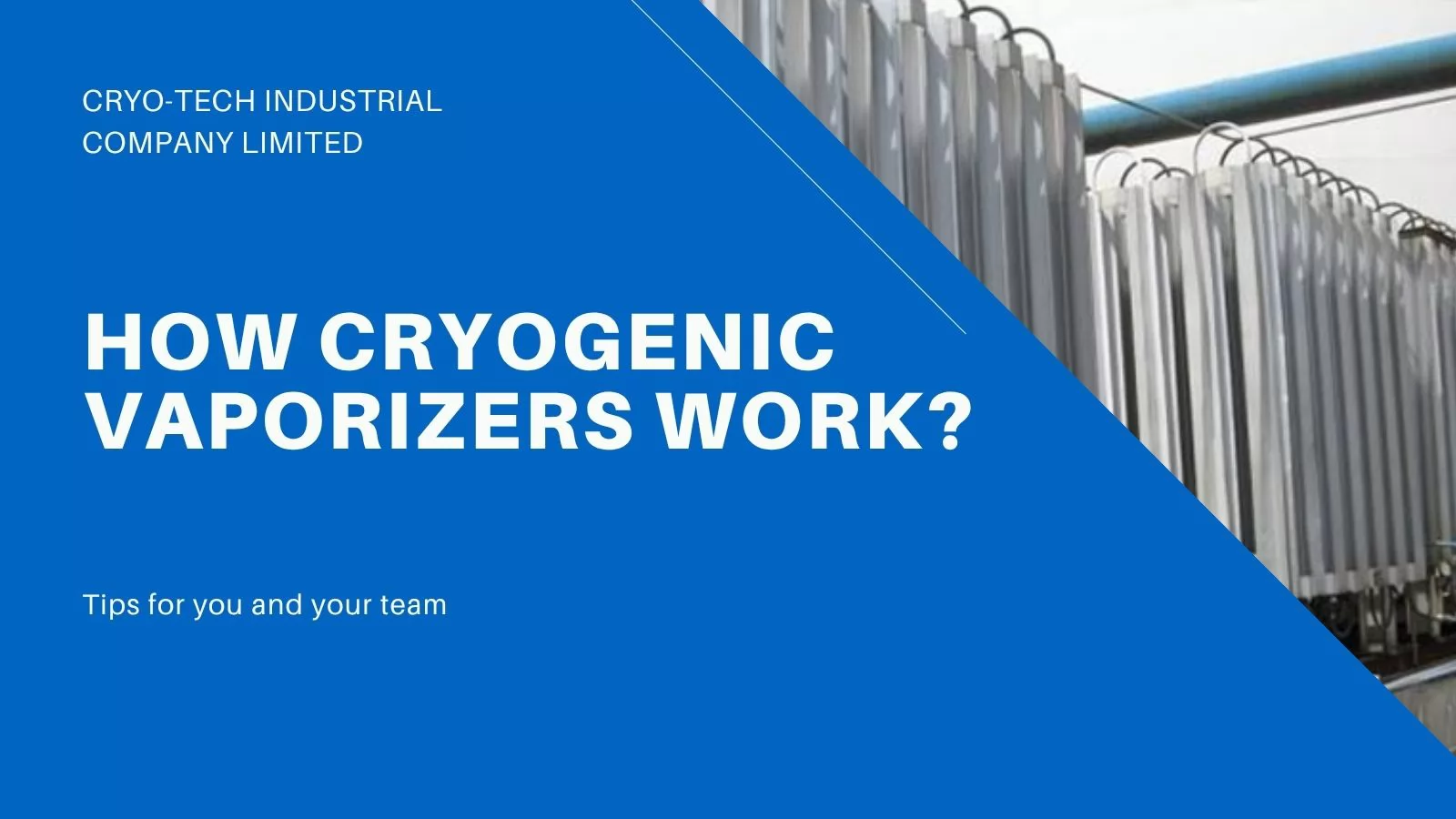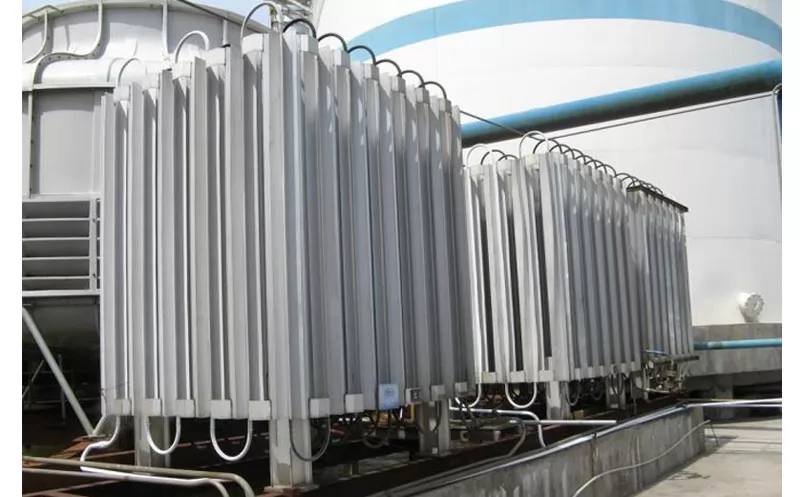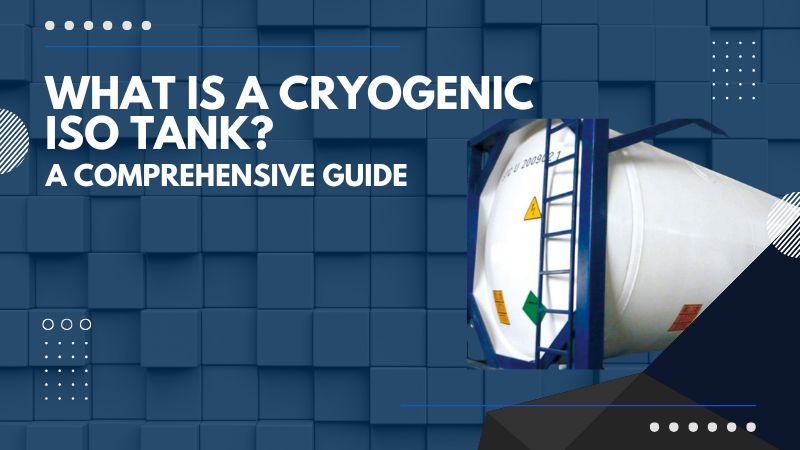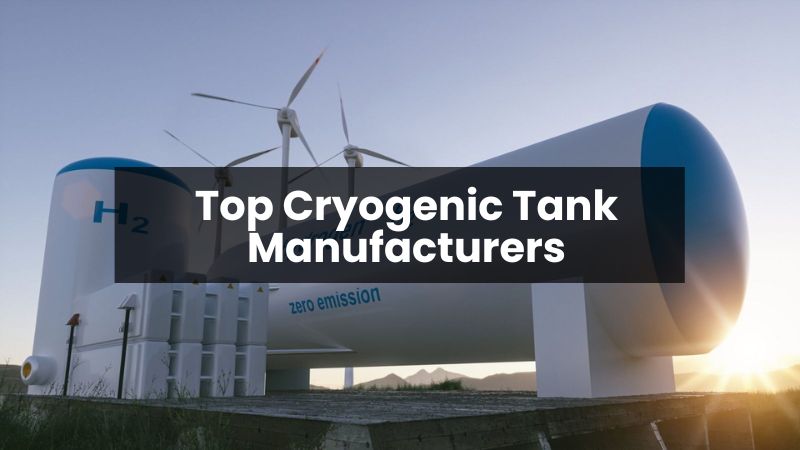






Cryogenic vaporizers work by transferring heat to a cryogenic liquid, like liquid nitrogen, to convert it into a gaseous state. They utilize various methods to achieve this, including using ambient air, steam, or electric heating elements. The goal is to transform the liquid into a usable gaseous form for various applications.
Understanding the mechanics of cryogenic vaporizers is essential for industries relying on gases like nitrogen, oxygen, or LNG. This guide provides a detailed look at how these systems function, their components, types, applications, and key considerations, with a focus on CryoTech's industry-leading solutions.
Cryogenic vaporizers act as heat exchangers, transferring thermal energy to the cryogenic liquid. This heat causes the liquid to boil and vaporize, transitioning from a liquid to a gas. The efficiency of this process depends on the design of the heat exchanger and the heat source used. Effective heat transfer ensures minimal energy loss and consistent gas output, making vaporizers critical for industrial applications.
The process begins with the cryogenic liquid, stored at extremely low temperatures (often below -150°C), being pumped through the vaporizer's heat exchanger. As the liquid absorbs heat, it reaches its boiling point and transitions into a gas. This gas is then delivered at the required pressure and temperature for downstream applications.
CryoTech's vaporizers are engineered to maximize heat transfer efficiency, ensuring rapid and reliable vaporization for a range of cryogenic liquids, including nitrogen, oxygen, and LNG.
Cryogenic vaporizers rely on various heat sources to facilitate the vaporization process. Each type is suited to specific applications based on efficiency, cost, and environmental factors. Below are the primary types of heat sources used in cryogenic vaporizers:
These utilize the surrounding air as a heat source, absorbing heat from the air and transferring it to the cryogenic liquid flowing through tubes or coils. Ambient air vaporizers are cost-effective and environmentally friendly, as they require no external energy input. However, their performance can be affected by weather conditions, such as low ambient temperatures or high humidity, which may lead to ice buildup.
These use electric heating elements to directly heat the cryogenic liquid. Electric vaporizers offer precise temperature control and are ideal for applications requiring consistent performance. They are commonly used in controlled environments but may incur higher operational costs due to electricity consumption.
These submerge the cryogenic liquid (often in a coil) in a heated water bath, transferring heat through the water. Water bath vaporizers are highly efficient and suitable for high-volume applications. They are often used in industries where large quantities of gas are needed, such as LNG processing.
These use steam as a heat source, often in a shell-and-tube heat exchanger, to heat the cryogenic liquid. Steam vaporizers are effective for large-scale industrial applications, offering rapid vaporization and high throughput. They are commonly used in facilities with existing steam infrastructure.
These vaporize fluids upstream of a gas flare, often operating at near-atmospheric pressure. Flare vaporizers are specialized for applications in the oil and gas industry, where excess gases need to be safely managed before combustion.
CryoTech offers a range of vaporizers tailored to each heat source, ensuring optimal performance for diverse industrial needs.
Cryogenic vaporizers are complex systems with several critical components that ensure efficient and safe operation. These include:
The core component responsible for transferring heat. It can be finned tubes, coils, or other configurations depending on the heat source and application. The design of the heat exchanger directly impacts the vaporizer's efficiency and capacity.
Cryogenic vaporizers are often insulated to minimize heat loss and maintain the low temperatures of the cryogenic liquid before vaporization. High-quality insulation reduces energy waste and ensures consistent performance.
A system to regulate the pressure at which the gas is delivered after vaporization. This ensures the gas meets the specific requirements of downstream applications, such as industrial processes or pipeline delivery.
CryoTech's vaporizers are designed with advanced components, ensuring durability, efficiency, and precise control for a wide range of applications.
Cryogenic vaporizers are essential for various applications, including:
CryoTech's vaporizers are engineered to meet the demands of these applications, offering reliable and efficient solutions for industries worldwide.
When selecting or operating cryogenic vaporizers, several factors must be considered to ensure optimal performance and safety:
Ambient air vaporizers can experience ice buildup on the heat exchanger fins, which can reduce efficiency and require defrosting. Regular maintenance and proper design can mitigate this issue.
Vaporizers are constructed with materials that can withstand extreme temperatures and temperature changes. Stainless steel and aluminum are commonly used for their durability and resistance to cryogenic conditions.
Cryogenic vaporizers must be designed and operated with safety in mind, due to the potential hazards associated with handling cryogenic liquids. Proper training, safety protocols, and equipment design are critical to preventing accidents.
CryoTech prioritizes safety and efficiency, incorporating advanced materials and safety features into its vaporizer designs.

CryoTech stands out as a leader in cryogenic vaporizer technology, offering solutions that combine innovation, reliability, and efficiency. Here's why industries choose CryoTech:
By choosing CryoTech, industries gain access to cutting-edge cryogenic vaporizers that enhance operational efficiency and reliability.
Cryogenic vaporizers play a vital role in transforming cryogenic liquids into usable gases for a wide range of industrial, medical, and research applications. By understanding their heat transfer mechanisms, heat sources, components, and key considerations, industries can select the right vaporizer for their needs. CryoTech's advanced cryogenic vaporizers offer unmatched efficiency, safety, and customization, making them the preferred choice for businesses worldwide.
Whether you're vaporizing LNG for energy production or liquid nitrogen for medical applications, CryoTech provides reliable solutions to meet your demands. Explore CryoTech's product range today to discover how their cryogenic vaporizers can enhance your operations.

![Top 10 LNG Tank Manufacturers Worldwide[2025 Updated]](/statics/images/right.png)
![Top 10 LNG Tank Manufacturers Worldwide[2025 Updated]](/uploads/202506/CryoTech-banner-1-_1750490922_WNo_800d450.jpg)





